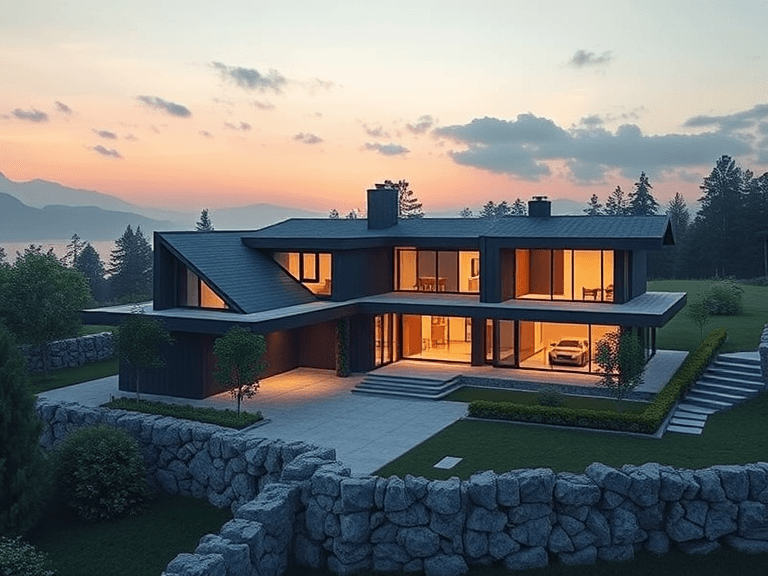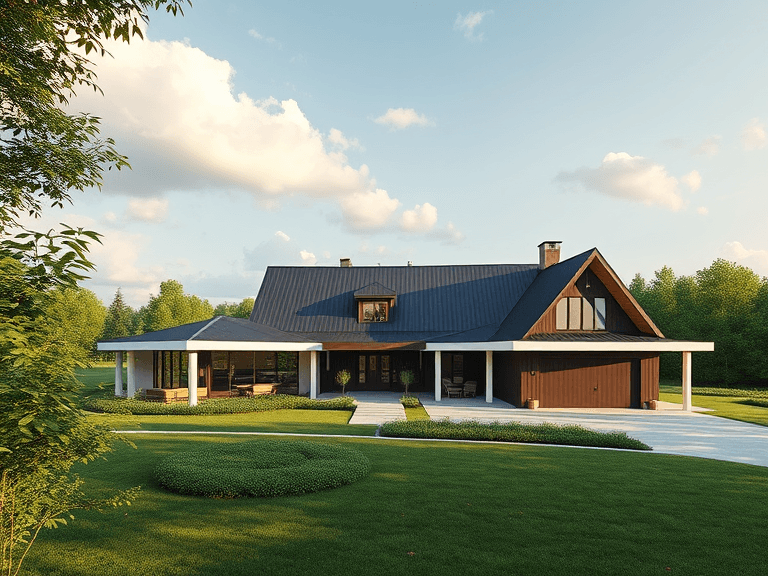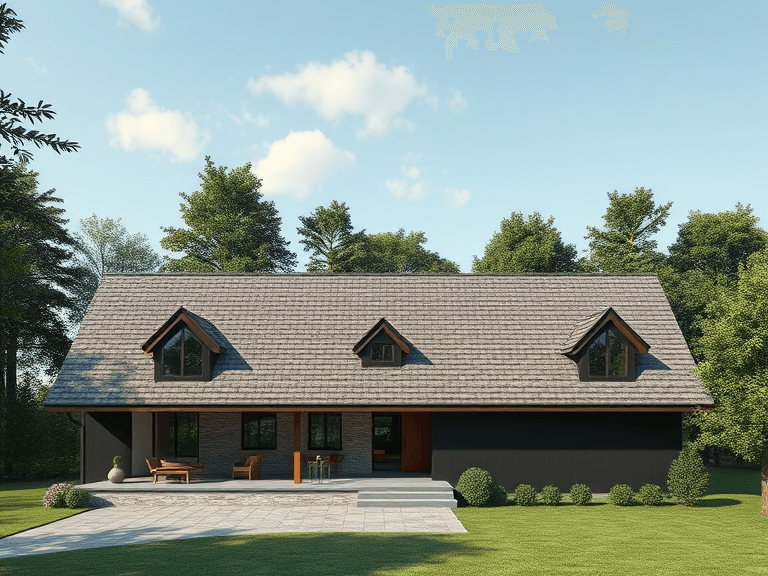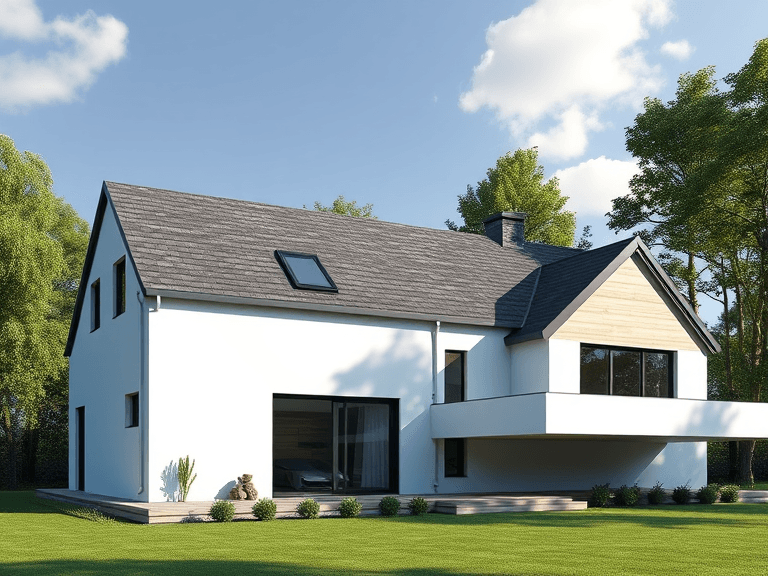
The selection of suitable roofing materials and styles is a crucial decision for any homeowner, as the roof serves as the first line of defense against weather elements and environmental factors. Understanding the different types of home roofs available is essential in making an informed choice that enhances both the aesthetic appeal and functionality of a residence. Many key factors influence roofing decisions, including climate considerations, budget constraints, durability, and overall visual appeal.
Climate plays a pivotal role in determining which roof type will effectively safeguard a home. For example, areas prone to heavy snowfall may benefit from steeply pitched roofs designed to facilitate snow runoff, while regions experiencing extreme heat may require materials with reflective properties to reduce heat absorption. Additionally, certain designs are better suited for high winds or heavy rainfall, making climate assessment a vital part of the roofing selection process.
Aesthetic preferences also significantly affect roofing choices. Homeowners often look for roofing styles that harmonize with the overall architecture of their homes. From the textured look of shingles to the sleek finish of metal roofs, each type contributes to the home’s character. Furthermore, cost considerations cannot be overlooked, as different roofing materials come with varying price points. While some may opt for budget-friendly choices, investing in durable and long-lasting roofing may yield greater value over time.
Durability, a fundamental aspect of roofing, should also be considered. Roofs are subject to wear and tear due to environmental factors, and selecting a robust material can minimize maintenance costs while ensuring long-lasting protection. With an array of options available in the market, understanding the pros and cons of various roofing types can enhance the decision-making process. This knowledge sets the stage for exploring different types of home roofs, ultimately enabling homeowners to select the best fit for their properties.
Popular Roofing Materials
When it comes to exploring different types of home roofs, homeowners often focus on the materials used in construction. Understanding the various roofing materials available is crucial for making an informed decision that suits individual needs and preferences. This section provides an overview of the most common roofing materials utilized in residential construction.
Asphalt shingles are perhaps the most prevalent choice among homeowners. These shingles are known for their affordability, ease of installation, and variety of styles. They generally last between 15 to 30 years, depending on the quality, and require minimal maintenance. However, they are less durable than some other options, and their lifespan can be affected by extreme weather conditions.
Metal roofing has gained popularity due to its longevity and sustainability. Made from materials like steel or aluminum, metal roofs can last 40 to 70 years. They are highly resistant to extreme weather, fire, and insects, but the initial installation cost is higher compared to asphalt shingles. Metal roofing can also be noisy during rain or hail unless a soundproofing underlayment is installed.
Wood shakes offer a distinctive, natural look that appeals to many homeowners. These roofs are made from cedar, redwood, or other types of wood. They typically last around 30 years with appropriate upkeep but are more susceptible to fire and rot, requiring regular maintenance and treatment to preserve their integrity.
Clay and concrete tiles are highly durable and can endure harsh weather conditions, with lifespans exceeding 50 years. They provide excellent insulation but can be costly to install and may require additional structural support due to their weight. Homeowners should account for these factors in their budget.
Finally, slate roofs are known for their aesthetic appeal and unmatched durability, often lasting over a century. While the upfront costs are significantly higher, the lifespan and minimal maintenance make slate a long-term investment. However, not all homes can support the weight of slate tiles, requiring careful consideration.
Each of these roofing materials offers unique advantages and disadvantages, influencing the choice of homeowners when exploring different types of home roofs. It is essential to weigh these factors based on one’s budget, maintenance preference, and aesthetic desires.

Roof Styles and Designs
When considering home construction or renovation, the roof is a pivotal aspect that significantly influences both aesthetics and functionality. There are numerous types of home roofs, each with distinct characteristics, benefits, and implications for the overall architectural style of a residence.
One of the most common roof styles, the gable roof, is easily recognizable by its triangular shape. This design effectively facilitates water drainage while providing an ideal space for attic ventilation. Gable roofs are not only visually appealing but also versatile, suiting various architectural forms from traditional to modern homes.
Another prevalent option is the hip roof, which features slopes on each side that converge at the top, creating a more stable structure. This style is particularly effective in regions prone to high winds, offering superior resistance compared to gable roofs. Additionally, hip roofs provide extra usable space in the attic, enhancing storage potential.
Flat roofs, while often associated with modern or industrial aesthetics, can offer practical advantages such as increased outdoor living space or utility installation. They are also cost-effective; however, homeowners need to ensure proper drainage and waterproofing to avoid potential issues with standing water.
The shed roof is a single-sloped design that offers a contemporary look while maximizing natural light in adjacent rooms through large windows. This style is often used in combination with other roof types to create visually dynamic structures.
Lastly, the mansard roof, characterized by its dual slopes on each side, combines practicality with elegance, allowing for additional living space under the roof. This design not only enhances the overall value of a home but also offers aesthetic appeal, making it popular in numerous architectural styles.
Ultimately, exploring different types of home roofs requires careful consideration of how each style complements the home’s design and safeguards against various environmental conditions. Factors such as energy efficiency and maintenance needs should also guide the decision-making process.
Future Trends in Roofing
The landscape of home roofing is undergoing significant transformation as emerging trends and technologies gain traction. One noteworthy advancement is the rise of green roofing systems, which incorporate vegetation atop the roof structure. These systems not only enhance aesthetic appeal but also provide environmental benefits such as improved insulation, stormwater management, and increased biodiversity. Homeowners considering such roofing types may find they can lower energy costs while contributing positively to the environment.
Another impactful trend is the integration of solar technologies into roofing materials. Solar-integrated roofs, which combine traditional shingles or tiles with photovoltaic panels, offer a hybrid approach to harnessing solar energy. This innovation enables homeowners to reduce energy consumption while producing their own electricity. As advancements continue to improve efficiency and aesthetics, solar-integrated roofs are becoming a popular option for those seeking sustainable energy solutions in roofing.
Sustainable materials are also at the forefront of modern roofing innovations. Homeowners are increasingly opting for materials derived from recycled or eco-friendly sources, including metal roofs, clay tiles, and synthetic options designed to mimic traditional materials with enhanced durability. These sustainable roofing types not only reduce environmental impact but often come with longer lifespans, leading to lower costs in the long run through reduced maintenance needs and replacement frequencies.
As homeowners plan renovations or new constructions, it becomes essential to consider these emerging trends. Exploring different types of home roofs now requires an understanding of not only aesthetic and functional elements but also environmental implications. By staying informed about innovations in roofing technologies and materials, homeowners can make educated decisions that benefit both their immediate living environment and the planet.


